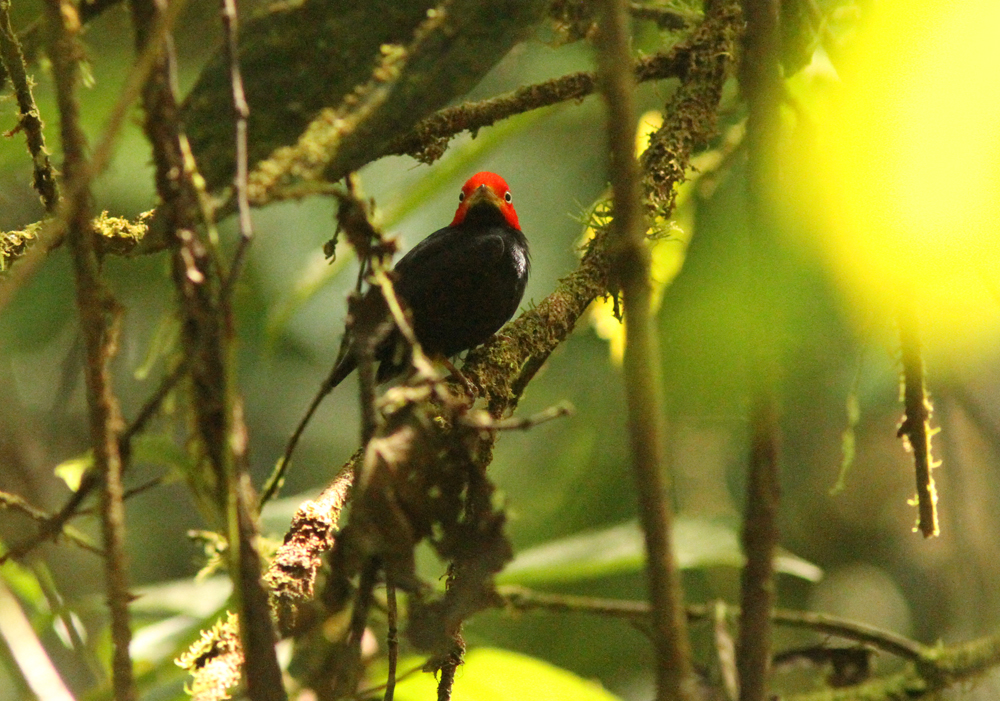After doing a pre-breakfast walk around the grounds we walked some trails into the forest interior after breakfast. Forest birding in the tropics mostly centers around finding little mixed feeding flocks, after seeing a very dug-in Ruddy Quail-dove and not being about to attract a Black-bellied Wren into view we found a little group. A pair of Dot-winged Antwrens and a pair of Black-hooded Antshrikes popped up virtually simultaneously. The antwrens worked past pretty quickly but the antshrikes were a little more cooperative.
The male (above) had been banded at a nearby biological station. The female has nesting material.
Despite seeing the antwrens several times I never managed a good pic of one.
A Black-cheeked Ant-tanager popped up relatively low, it seemed like it moved slowly, but it was another bird surprisingly hard to get into focus.
Its breeding range is smaller than Kirtland's Warbler's.
A Northern Bentbill's vibrating song called our attention to it.
A Rufous-winged Woodpecker is another bird whose name is really difficult to have sink in. The wings are obvious only when it flies; then it looks like a woodcreeper.
The Black-bellied Wren finally popped up not long after. The vegetation looks identical to the bird pictured on its Wikipedia article.
A Plain Xenops was the final bird I managed shots of out of this group.
We went down another path (the Bird Trail) to change habitats slightly. A Chestnut-backed Antbird was found fairly quickly.
It was another bird that would almost come out into the open, and then duck back. I lagged behind the group to get an even halfway decent shot ...
... and almost missed the Red-capped Manakin Vernon had spotted farther up the trail. Fortunately the tree it was in was fairly open; I looked where the groups' bins were aimed and saw the bird teed up in very nice light. It was almost better I didn't know what they were looking for.
Finally, the bird of the morning for me, a Baird's Trogon.
The picture doesn't do the colors of this bird justice.












No comments:
Post a Comment